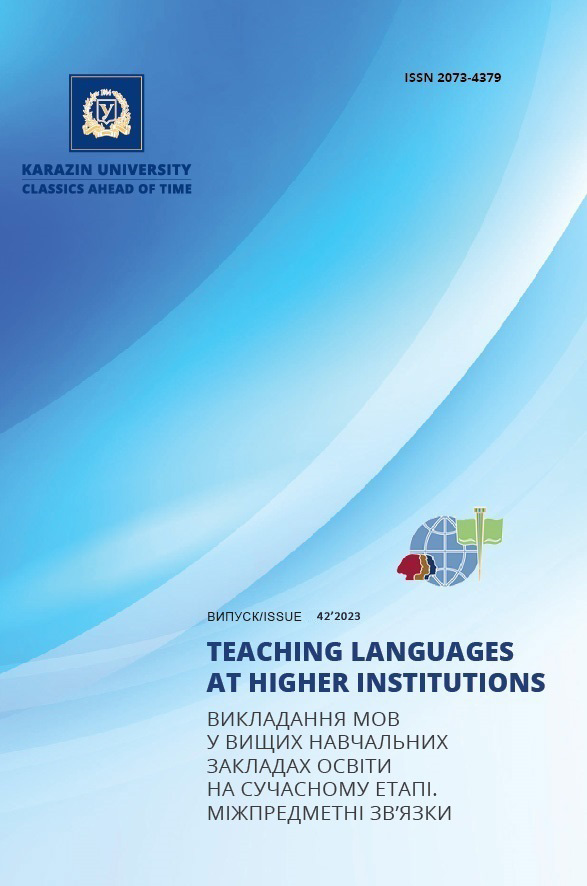Application of intercultural skills in foreign language acquisition
Abstract
The purpose of this article is to investigate the relationship between intercultural strategy and the objectives of foreign language processing. This research tends to tackle the crucial methodology question of how intercultural competence elements are integrated into the process of learning a foreign language. Its importance stems from the recognition that the acquisition of a new language requires comprehension of how oneʼs language and culture relate to the target language and culture. As a result, the methodology now focuses precisely on the development of intercultural communication skills rather than on the acquisition of basic language-use skills in a chosen language. Language is a medium through which culture is expressed. Language symbols encode a nationʼs knowledge of history, philosophy, economics, medicine, and other fields. Numerous studies conducted by linguists revealed that language intellectualization is seen as a way to enhance learnersʼ efficiency by providing them with in-depth knowledge. Words with substantial intellectual load are perceived by learners as aiding in the growth of intercultural competence due to their semantic capacity and relevance in transferring knowledge and decoding cultural symbols. The internationalisms as means of “naturalˮ language intellectualization were well received by the respondents since students donʼt have to exert much effort to incorporate them into their active vocabulary. Given that participants, according to the findings, mainly did not see the value in dealing with unfamiliar foreign vocabulary units offered without explanation, they nonetheless responded extremely favorably to internationalisms. Within the presented research, one of the crucial elements of the university curriculum that gives students a clear advantage over their peers is cited as the teaching of bilingual interaction skills.
This article also deals with the results of quantitative research on tolerance that used questionnaires filled out by students of non-philological faculties. First, it demonstrated the respondentsʼ comprehension and acceptance of foreignersʼ mistakes directly related to their inability to speak or write in the target language properly, and second, it indicated that there is, to some extent, a negative attitude toward faults linked to cultural ignorance or unawareness.
Downloads
References
Athanasopoulos, P. et al. (2015). Two Languages, Two Minds: Flexible Cognitive Processing Driven by Language of Operation. Psychological Science OnlineFirst. Vol. 26, Issue 4. DOI: https://doi.org/10.1177/0956797614567509.
Bloomfield, L. (1933). Language. New York: Henry Holt.
Byram, M. (1997). Teaching and assessing intercultural communicative competence. Clevedon: Multilingual matters.
Byram, M., Zarate, G. (1997). The sociocultural and intercultural dimension of language learning and teaching. Strasbourg: Council of Europe.
Fox, K. (Interviewer), Bialystok, E. (Interviewee). (2011). Bilingual brains are more healthy. The Guardian. June 12.
Jokikokko, J. (2005). Interculturally trained Finnish teachers’ conceptions of diversity and intercultural competence. Intercultural Education. 16, pp. 69–93.
Neuner, G. (2003). Socio-cultural interim worlds in foreign language teaching and learning. In: Byram, M. et al. Intercultural Competence. Strasbourg: Council of Europe, pp. 15–62.
Pascarella, E., Terenzini, P. (2005). How college affects stude

